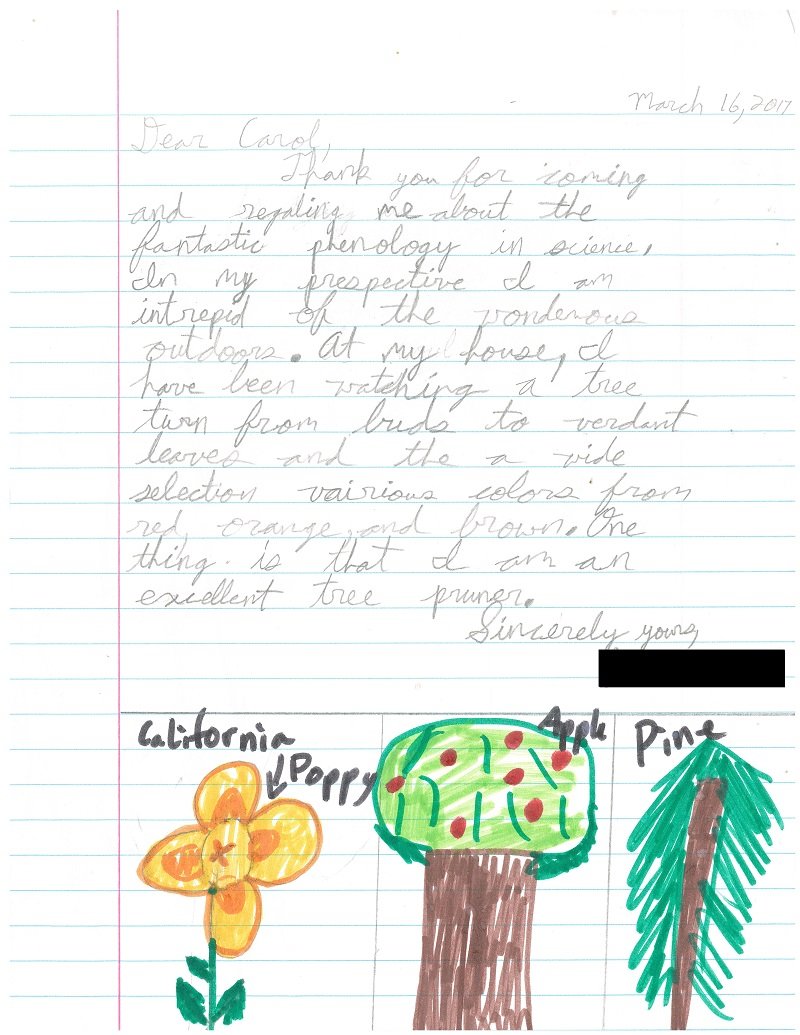Confessions of an Informal Educator: Informal Evaluation
by Carol Earnest
As the school year winds down, educators turn to themselves and ask, “So, how did that go?”
For the MKWC Watershed Education Program, the accumulation of nine months worth of field trips, classroom projects, and presentations at five schools prompts program-introspection as we ponder some big questions: How did we do? What can improve? What should never happen again?
Unlike our admirable formal educators, we informal educators do not have the same tools to evaluate success. We do not have continuous contact with students all day, five days a week, where we receive assignments and administer final exams (though we occasionally try to throw a pre and post test into the mix). Instead, true to our namesake, we rely on informal ways to evaluate our programs.
We use a variety of tools to go about this process. As we walk into a classroom to pick up students for a field trip are we met with smiling faces or rolling eyeballs? These nuggets of feedback are meticulously filed away for future review. Showing up with a platter of muffins? Conducting hands-on experiments involving food coloring? Popular (smiles and enthusiastic nodding were dead giveaways). Trying to convince middle schoolers to pull weeds in 40 degree rainy weather? Eye-roll city.
In addition to body language, car talk is an invaluable source of information. I place the time in the car between school and a field trip site on a shiny golden pedestal of evaluation opportunity. A relaxed car environment with little direct eye contact, where there is a sense of levity as we leave school and head out to the unknown, and where no one can go anywhere, is when some of the best honest feedback flows. For example, while sitting waiting for road workers to let us through a rock slide, I found out that eating lots of fruit is something a student is looking forward to during this year’s Klamath-Siskiyou Outdoor School, and that another student is really not interested in camping outside, ever, and that another student doesn’t like to sit and listen to me talk for long periods of time and would rather get on with the activity. In less than five minutes I learned we needed to buy more fruit, plan more day activities, and spend more time with hands-on projects.
The final, and arguably most entertaining evaluation tool, is informal writing assignments, in the forms of thank you cards and blog posts. Both allow students to reflect, without the worry of being graded. Using the classroom-safe Kidblog program, students have their own accounts where their blog posts are read by their peers and teachers. They can receive comments, and they can upload photos. This creates a sense of ownership and pride in their work, and we find that students are more willing to reflect on activities and showcase what they learned when they get to pick their font color, background photo, and emoji.
Similarly, thank you cards are not graded and with little effort, they can provide great feedback with some reading between the lines. The teacher gives the assignment and it is often to the point, “write a thank you card.” This simplicity offers a lot of room for creativity. Often they include drawings, questions, stories, and words that I have to look up from students in classrooms with Thesauruses readily available (sagacious?). In these writing assignments, we can pinpoint what the students remember. Are they using a vocabulary word we taught? Are they using a presentation as inspiration for a creative writing piece? Did they draw tree species that we observed? In one set of thank you cards after a garden workday, over half of them mentioned that they enjoying using glitter during the arts and crafts project. Noted.
I will admit that I occasionally allow time for some indulgent blog post and thank you card reading. Feeling uninspired? Read some thank you cards. Trying to remember what we did on that field trip? Read some blog posts. Grant proposal due in an hour? Read some thank you cards. They are a gift that keeps on giving.
Here are some of my favorites:
While we still continue to administer end of the year written evaluations, I believe, from personal experience, that interpreting body language, having casual conversations, and receiving informal writing assignments, are valuable tools to supplement the more formal written feedback, providing a more in-depth evaluation of program activities. With these techniques we may not be able to definitively say, students showed a 90% improvement in their knowledge of ________, but we can definitively say that 90% of the students left the field trip with smiles and glitter on their faces and some hands on experience improving their watershed.
Carol Earnest is MKWC’s Watershed Education Program Co-Director. She facilitates positive, educational experiences for young people of the Middle Klamath watershed, including field trips with local schools, KSOS, other restoration raft trips and hands on activities at events through MKWC and partner groups. She brings three years of experience working with youth, and a boundless, infectious enthusiasm for natural processes that occur in our ecosystems.




